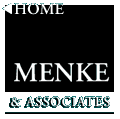
 |
|
| The PRO-Productivity System (tm) | |
SUCCESS In most well-managed American companies, the last significant opportunity for increasing profitability lies in enhancing employee productivity. All successful managers know that low-cost producers have a competitive edge. Cost control is a never-ending task. By and large, however, mature industries confront external cost structures which are not readily altered by any individual company. Prices, on the other hand, are governed by competition. This tight combination of external factors seems to leave the average company little maneuvering room for increasing overall profitability. One great opportunity retains its potential. Unlike most other components of the profit equation, the productivity rate is an internal resource which can be developed or neglected at the discretion of management. A company that increases its productivity rate enjoys a continuing cost advantage which competitors can hardly overcome. Higher profits follow increased productivity, and higher stock values follow higher profits.
Relatively small changes in the productivity rate can have a huge impact on profits. Assume, for example, a company with $10 million of annual revenues and pre-tax profits of $400,000. It the company can decrease its internal expenses by a mere 2% of sales ($200,000) while maintaining gross revenues, the company's profits grow by 50%. And since the value of a company is generally a direct multiple of profits, a stable 50% hike in profits usually translates into a 50% increase in shareholder value.
Before After % Change Revenues $10,000,000 $10,000,000 0% Expenses ( 9,600,000) ( 9,400,000) 2% Profit $ 400,000 $ 600,000 50%
After explaining that you don't have to work a lot harder to improve things by only 20%-- just be a bit smarter--the leadership at Austin Industries, a major Dallas-based construction firm, cemented the idea by handing out 2-inch green buttons for each employee-owner saying: "I'll do my 2 cents worth!"1
Given that the result is well worth the effort, how then can employee productivity be increased? For most companies, changes of this magnitude can be achieved more readily by maximizing the effectiveness of each compensation dollar than by any other means. The phrase "employee productivity," classically defined as output per unit of labor, can just as easily be understood as output per dollar of compensation. If revenue can be increased or expenses reduced without any change in the compensation dollars leaving the company, productivity and profits increase. The term employee productivity actually confuses the distinct inputs of labor and capital. The U.S. Senate Productivity Award mentioned above defines productivity broadly as "an organization's most efficient and effective use of the resources available to it to produce a high-quality product or perform a high-quality service at lowest cost. These resources include employee knowledge and labor, modern technology, raw materials, energy, plant and equipment, money and time."2
A 1992 ESOP Association analysis of IRS filings covering 2776 U.S. ESOP companies discovered a mean rate of return of 15.2% for public ESOP companies in contrast with 10.2% for a representative sample of non-ESOP companies during the same period.3
A carpenter with a power hammer will fasten more lumber than the same carpenter with an old-fashioned claw hammer. Is the worker more productive? Yes, but only because of a capital investment. Another carpenter, nailing away like crazy to fix his own roof before the next hurricane strikes, may exceed the productivity of the first despite a lack of power equipment.
The ideal productivity enhancement technique would thus have the capacity to boost both capital investment and employee motivation. An Employee Stock Ownership Plan is just such a technique. Designated by statute as a "tool of corporate finance," an ESOP establishes an incentive system that is rooted in ownership while simultaneously assisting the employer company with capital formation or conservation.
Under an ESOP, the company's tax-deductible investment in employee productivity remains invested in the company as capital stock and as a motivation for the employee's productivity. The investment is applied by the trustee to purchase shares directly from selling shareholders or to amortize a loan for the purchase of such shares. Alternately, the investment is utilized to purchase new shares or to amortize a loan for the purchase of new shares from the corporation itself. In this case, the total capital value of the company increases and the employees acquire part ownership approximately equal in value to the new growth.
No particular amount of employee ownership is mandated by law, though the value of the average stock account obviously must be significant enough to command employee attention if the company hopes for measurable results.
As the company expands, both the initial shareholders and the new employee owners share proportionally in the increasing corporate value.
The combined financial and incentive effect of employee ownership provides the foundation upon which thousands of successful companies have developed programs to increase productivity and profitability.
As early as 1927, the founder of the Bank of America, A. R Giannini, recognized that:
"Ownership by employees is the only successful system for big business. A man has to have more interest than his salary to produce the best that is in him."
The same is true today. At Menke & Associates, Inc., our experience with over 1,500 companies since 1974 has convinced us that there is no greater productivity bang for your buck than the adoption of a well-conceived and consistently executed employee stock ownership program.
Back to the Index |